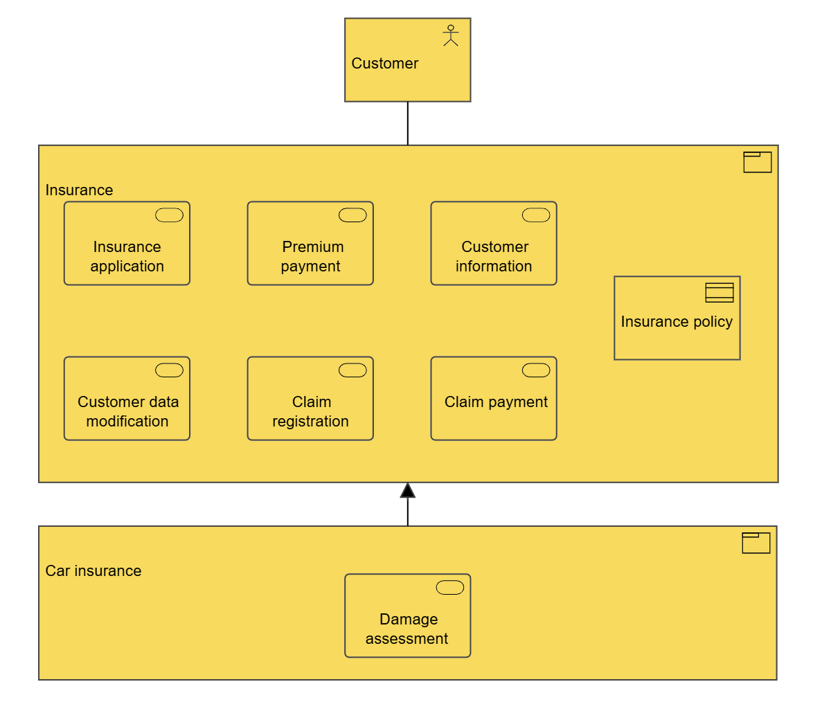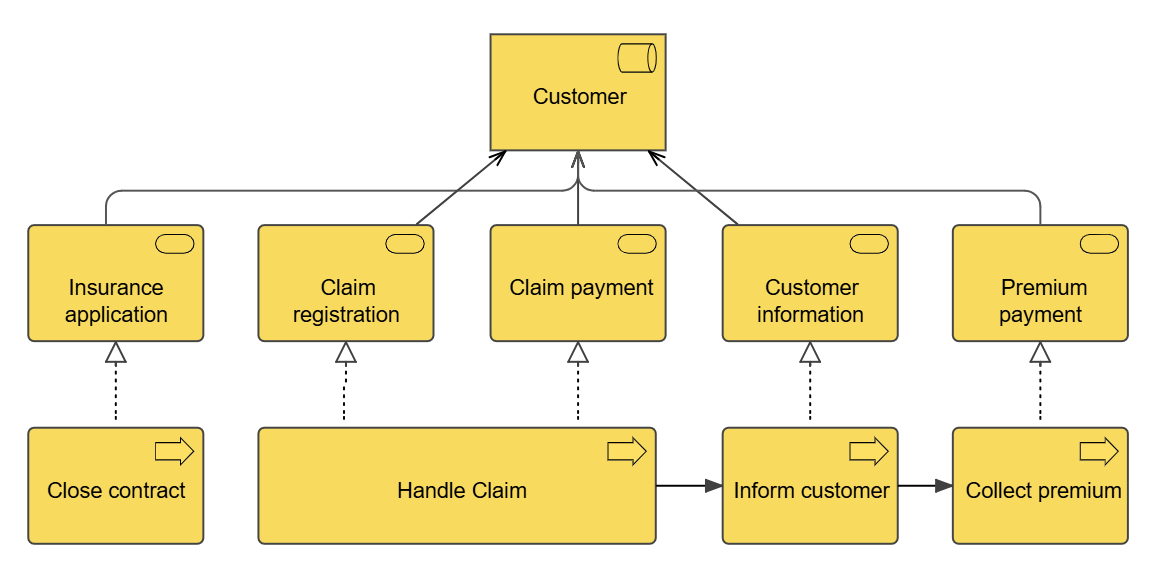Concerns: Product development, value offered by the products of the enterprise
Purpose: Designing, deciding
Scope: Multiple layer/Multiple aspect
The product viewpoint depicts the value that these products offer to the customers or other external parties involved and shows the composition of one or more products in terms of the constituting (business, application, or technology) services, and the associated contract(s) or other agreements. It may also be used to show the interfaces (channels) through which this product is offered, and the events associated with the product. A product viewpoint is typically used in product development to design a product by composing existing services or by identifying which new services have to be created for this product, given the value a customer expects from it. It may then serve as input for business process architects and others that need to design the processes and ICT realizing these products.


